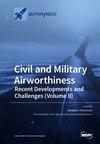Toward Effective Aircraft Call Sign Detection Using Fuzzy String-Matching between ASR and ADS-B Data
IF 2.2
3区 工程技术
Q2 ENGINEERING, AEROSPACE
引用次数: 0
Abstract
Recently, artificial intelligence and data science have witnessed dramatic progress and rapid growth, especially Automatic Speech Recognition (ASR) technology based on Hidden Markov Models (HMMs) and Deep Neural Networks (DNNs). Consequently, new end-to-end Recurrent Neural Network (RNN) toolkits were developed with higher speed and accuracy that can often achieve a Word Error Rate (WER) below 10%. These toolkits can nowadays be deployed, for instance, within aircraft cockpits and Air Traffic Control (ATC) systems in order to identify aircraft and display recognized voice messages related to flight data, especially for airports not equipped with radar. Hence, the performance of air traffic controllers and pilots can ultimately be improved by reducing workload and stress and enforcing safety standards. Our experiment conducted at Tangier’s International Airport ATC aimed to build an ASR model that is able to recognize aircraft call signs in a fast and accurate way. The acoustic and linguistic models were trained on the Ibn Battouta Speech Corpus (IBSC), resulting in an unprecedented speech dataset with approved transcription that includes real weather aerodrome observation data and flight information with a call sign captured by an ADS-B receiver. All of these data were synchronized with voice recordings in a structured format. We calculated the WER to evaluate the model’s accuracy and compared different methods of dataset training for model building and adaptation. Despite the high interference in the VHF radio communication channel and fast-speaking conditions that increased the WER level to 20%, our standalone and low-cost ASR system with a trained RNN model, supported by the Deep Speech toolkit, was able to achieve call sign detection rate scores up to 96% in air traffic controller messages and 90% in pilot messages while displaying related flight information from ADS-B data using the Fuzzy string-matching algorithm.利用 ASR 和 ADS-B 数据之间的模糊字符串匹配实现有效的飞机呼号检测
最近,人工智能和数据科学取得了突飞猛进的发展,尤其是基于隐马尔可夫模型(HMM)和深度神经网络(DNN)的自动语音识别(ASR)技术。因此,新开发的端到端循环神经网络(RNN)工具包具有更快的速度和更高的准确性,通常可以实现低于 10%的词错误率(WER)。如今,这些工具包可以部署在飞机驾驶舱和空中交通管制(ATC)系统中,以识别飞机并显示与飞行数据相关的识别语音信息,尤其是在未配备雷达的机场。因此,通过减轻工作量和压力以及执行安全标准,最终可以提高空中交通管制员和飞行员的工作绩效。我们在丹吉尔国际机场空管中心进行的实验旨在建立一个能够快速准确识别飞机呼号的 ASR 模型。我们在 Ibn Battouta Speech Corpus(IBSC)上对声学和语言模型进行了训练,从而获得了一个前所未有的语音数据集,其中包括由 ADS-B 接收机捕获的带有呼号的真实气象机场观测数据和航班信息,该数据集的转录得到了认可。所有这些数据都与结构化格式的语音记录同步。我们通过计算 WER 来评估模型的准确性,并比较了用于模型构建和适应的不同数据集训练方法。尽管 VHF 无线电通信信道的干扰很强,而且在快速说话的条件下,WER 水平提高到了 20%,但我们的独立低成本 ASR 系统在深度语音工具包的支持下,利用训练有素的 RNN 模型,在使用模糊字符串匹配算法显示 ADS-B 数据中的相关飞行信息时,能够在空中交通管制员信息中实现高达 96% 的呼号检测率,在飞行员信息中实现高达 90% 的呼号检测率。
本文章由计算机程序翻译,如有差异,请以英文原文为准。
求助全文
约1分钟内获得全文
求助全文
来源期刊

Aerospace
ENGINEERING, AEROSPACE-
CiteScore
3.40
自引率
23.10%
发文量
661
审稿时长
6 weeks
期刊介绍:
Aerospace is a multidisciplinary science inviting submissions on, but not limited to, the following subject areas: aerodynamics computational fluid dynamics fluid-structure interaction flight mechanics plasmas research instrumentation test facilities environment material science structural analysis thermophysics and heat transfer thermal-structure interaction aeroacoustics optics electromagnetism and radar propulsion power generation and conversion fuels and propellants combustion multidisciplinary design optimization software engineering data analysis signal and image processing artificial intelligence aerospace vehicles'' operation, control and maintenance risk and reliability human factors human-automation interaction airline operations and management air traffic management airport design meteorology space exploration multi-physics interaction.
 求助内容:
求助内容: 应助结果提醒方式:
应助结果提醒方式:


